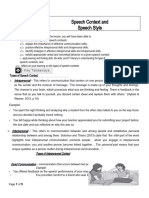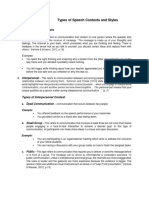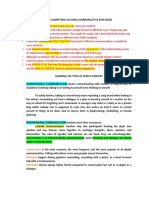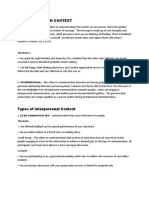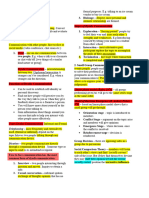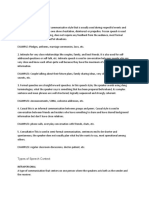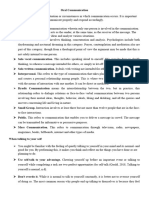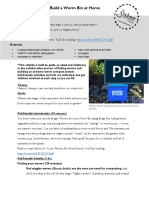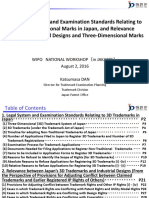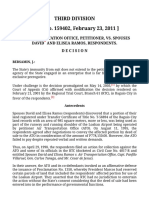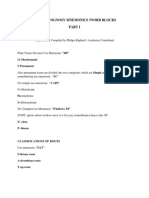0% found this document useful (0 votes)
4 views25 pagesCommunicative Strategies and Speech Styles 2324
The document discusses various types of communication, including intrapersonal, interpersonal, public, and mass communication, highlighting their characteristics and contexts. It also outlines different speech styles such as intimate, casual, formal, consultative, and frozen styles, emphasizing their appropriate usage in various situations. Additionally, it includes learning objectives and an assignment aimed at encouraging self-reflection and application of communication concepts.
Uploaded by
altheafelias8Copyright
© © All Rights Reserved
We take content rights seriously. If you suspect this is your content, claim it here.
Available Formats
Download as PPTX, PDF, TXT or read online on Scribd
0% found this document useful (0 votes)
4 views25 pagesCommunicative Strategies and Speech Styles 2324
The document discusses various types of communication, including intrapersonal, interpersonal, public, and mass communication, highlighting their characteristics and contexts. It also outlines different speech styles such as intimate, casual, formal, consultative, and frozen styles, emphasizing their appropriate usage in various situations. Additionally, it includes learning objectives and an assignment aimed at encouraging self-reflection and application of communication concepts.
Uploaded by
altheafelias8Copyright
© © All Rights Reserved
We take content rights seriously. If you suspect this is your content, claim it here.
Available Formats
Download as PPTX, PDF, TXT or read online on Scribd
/ 25




